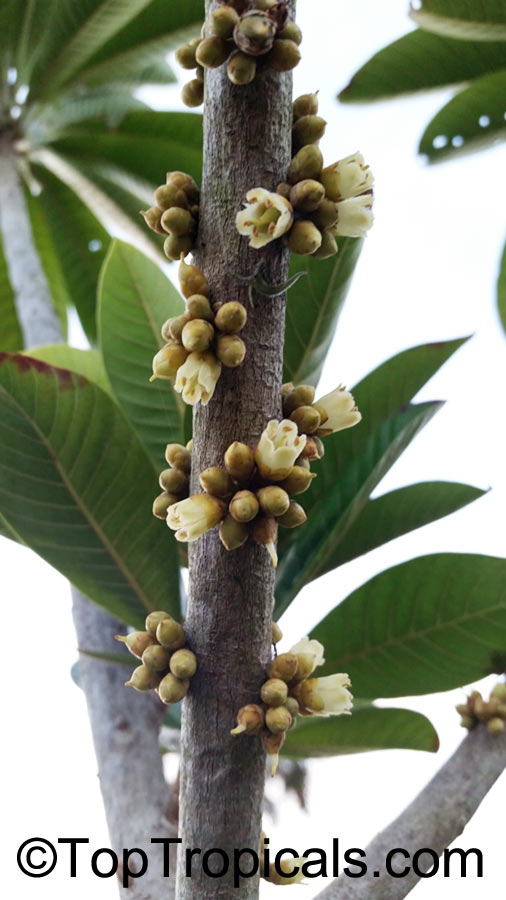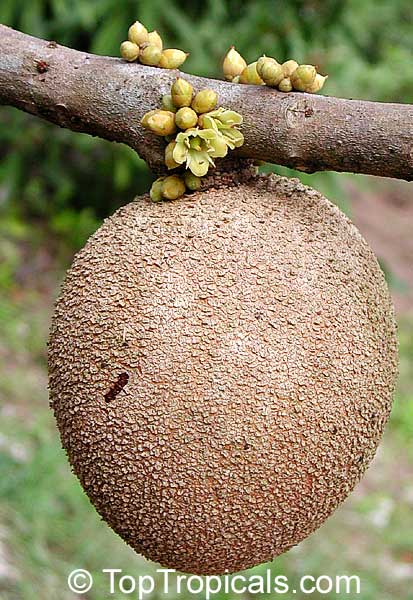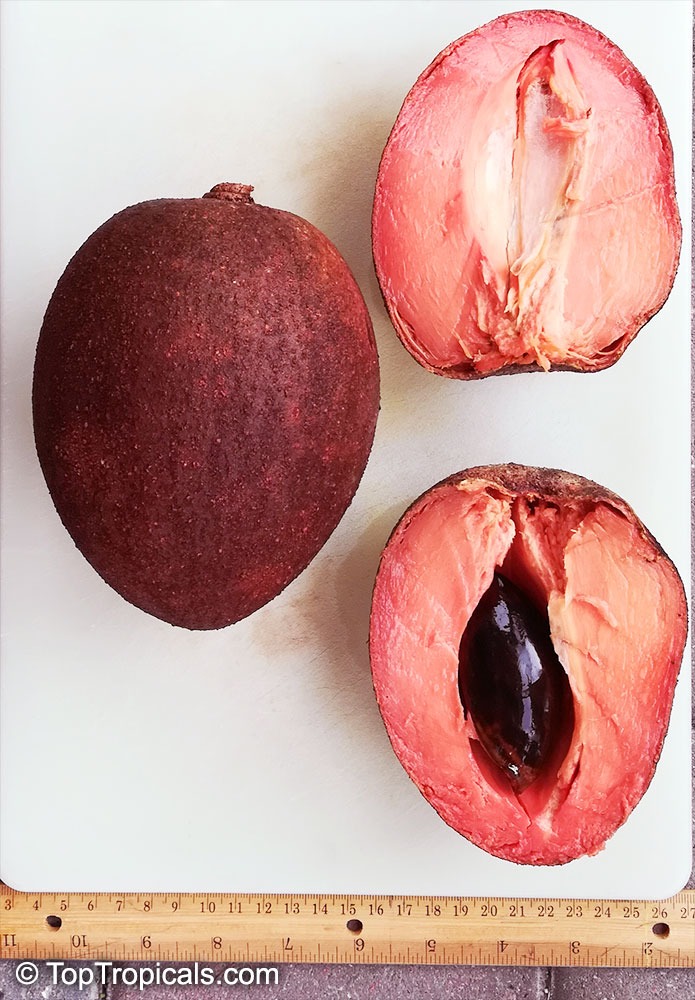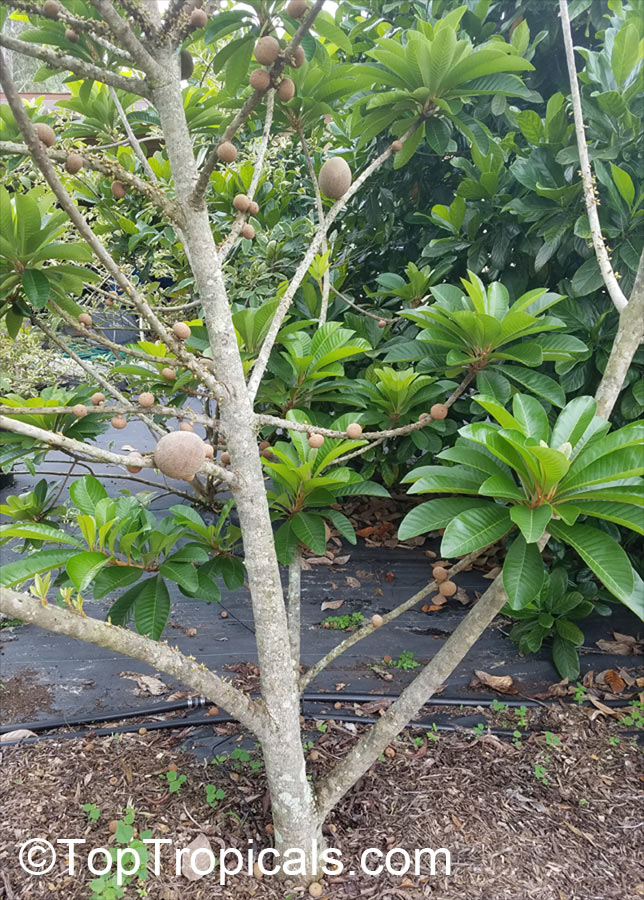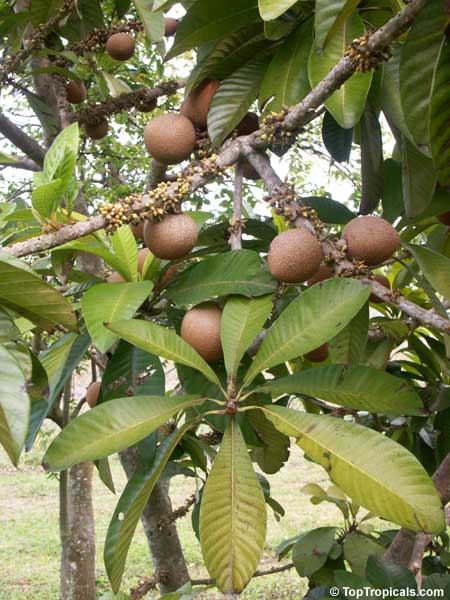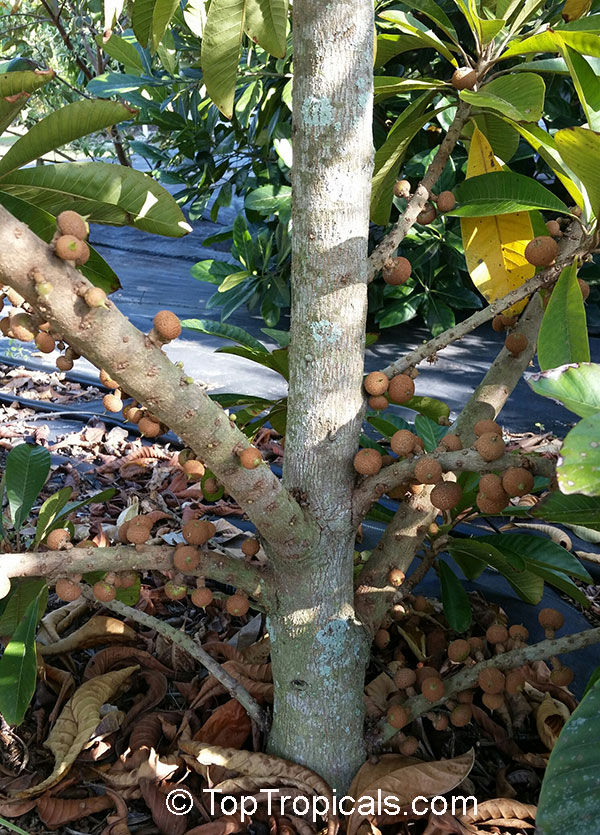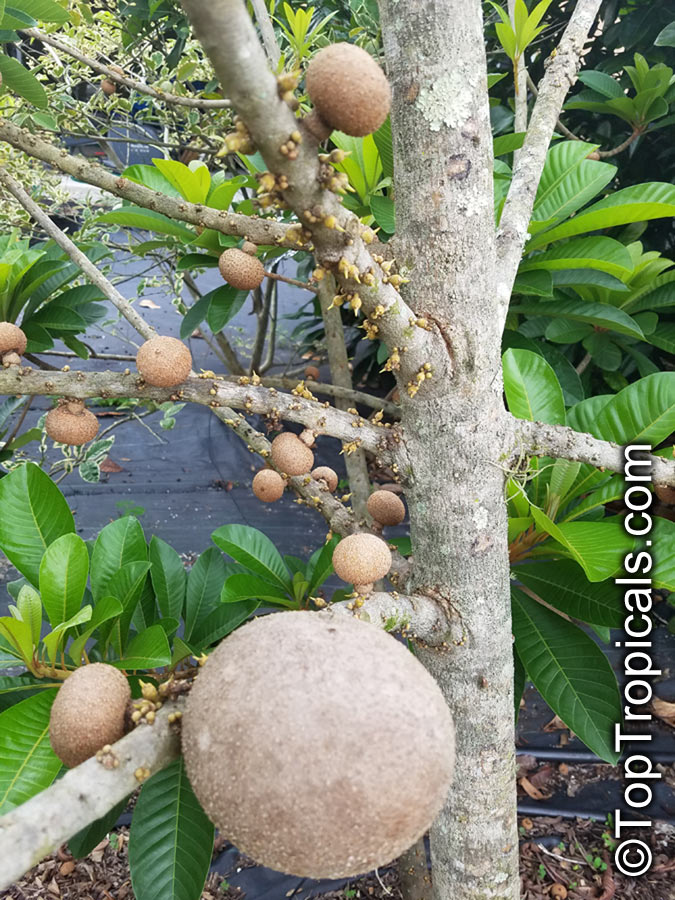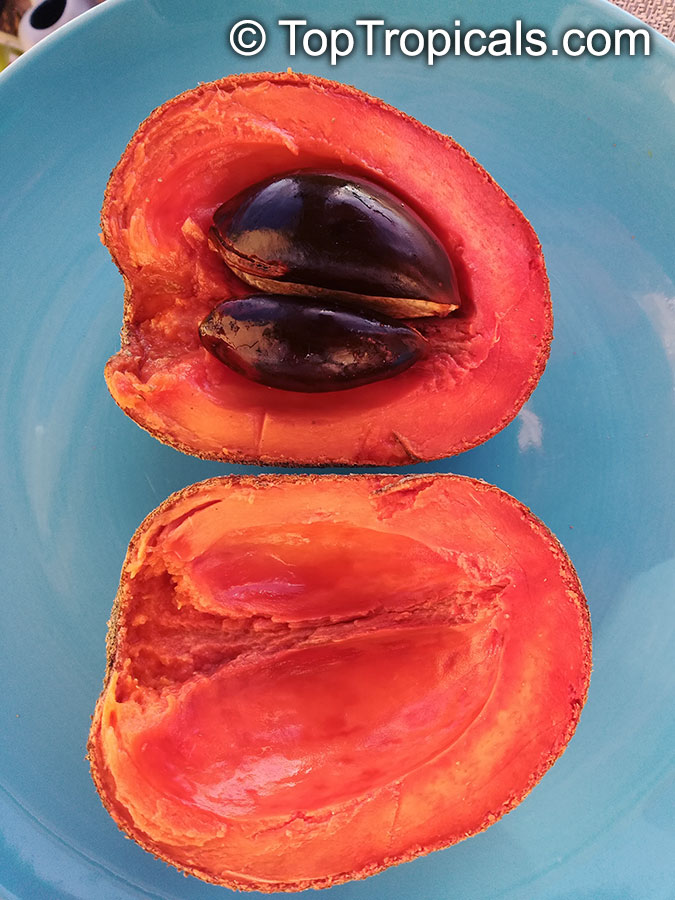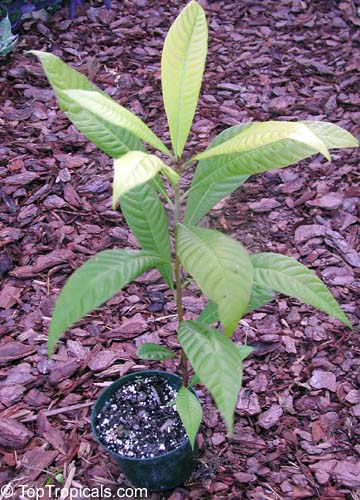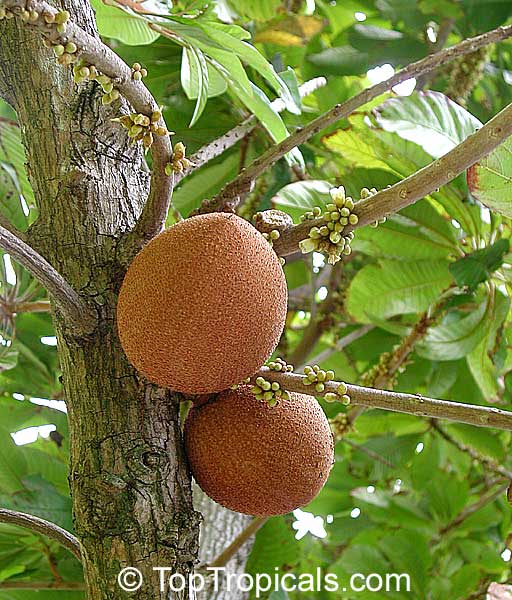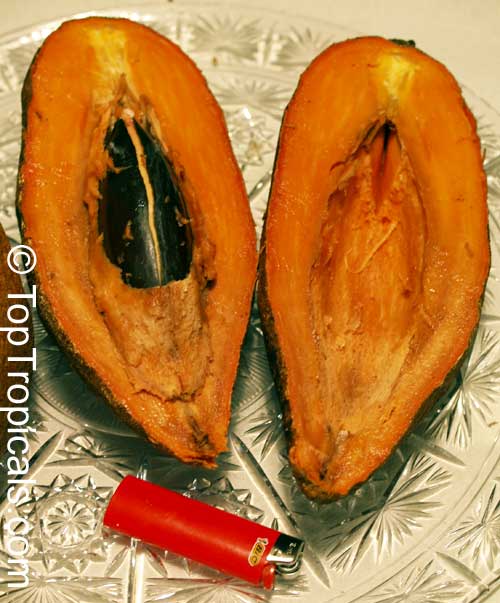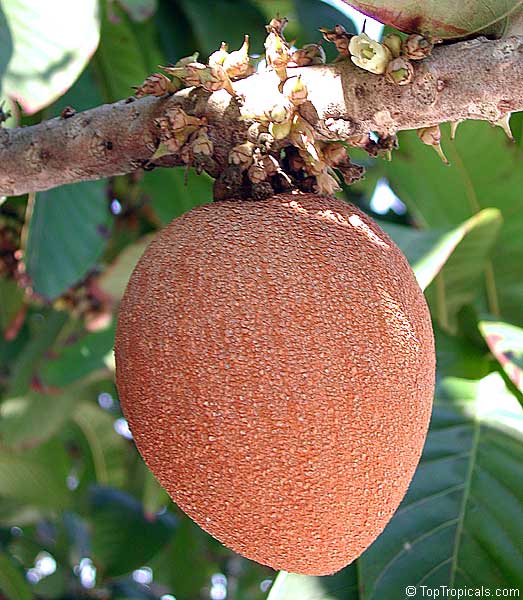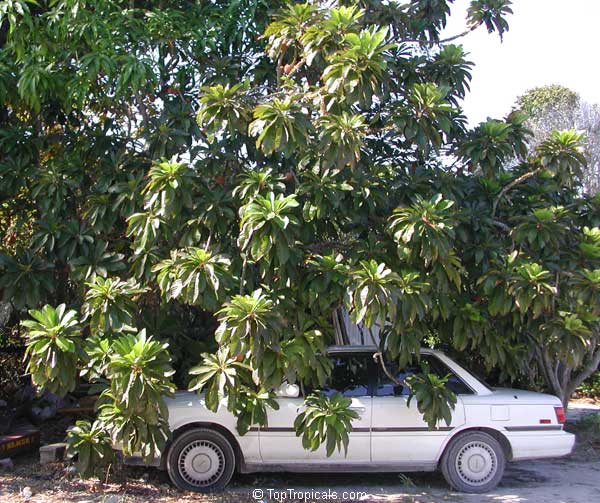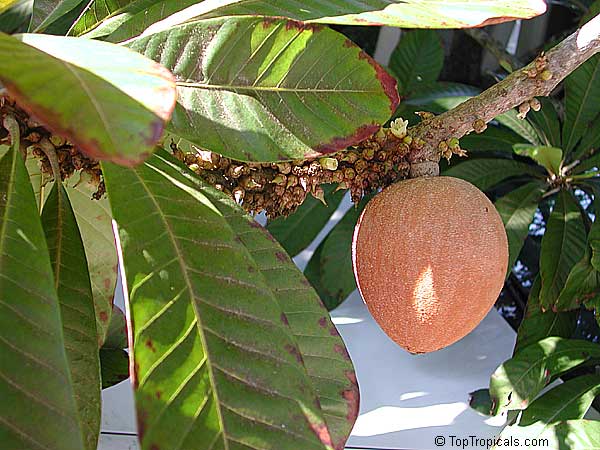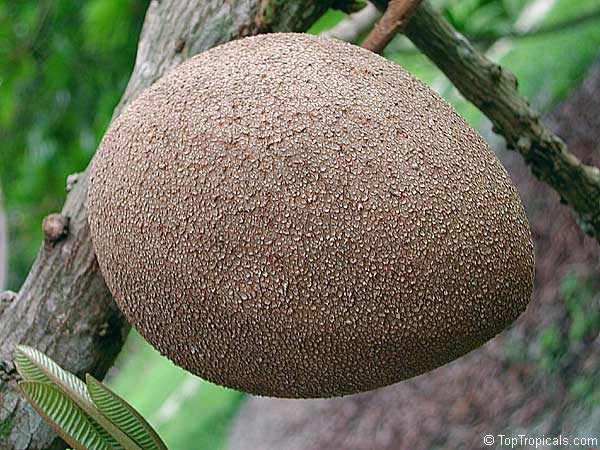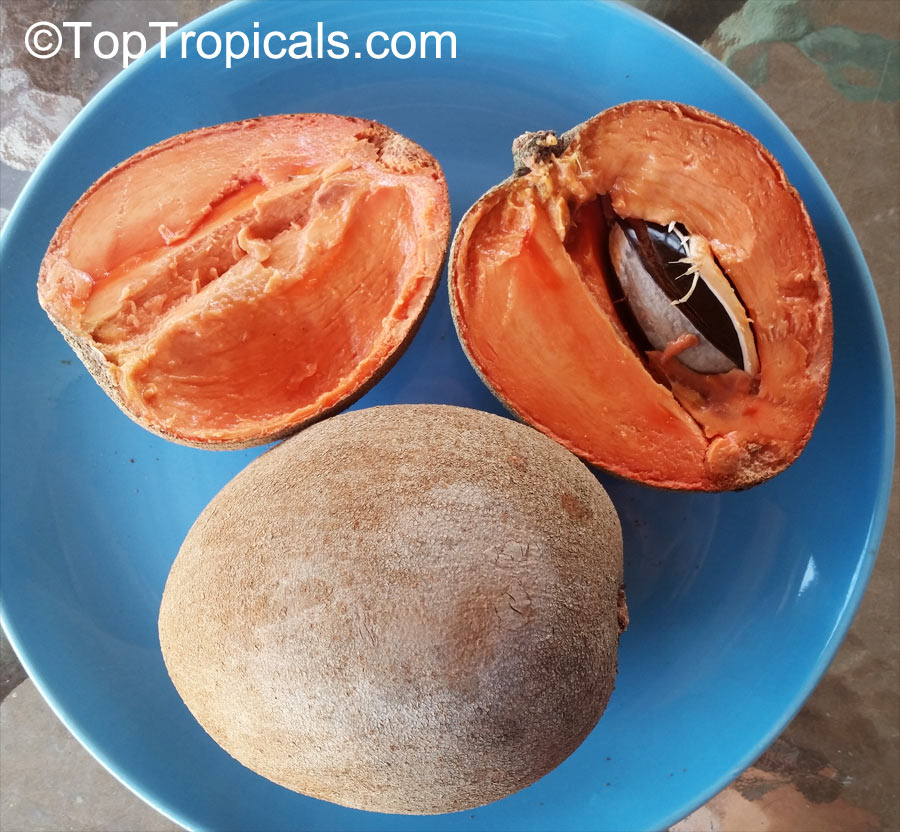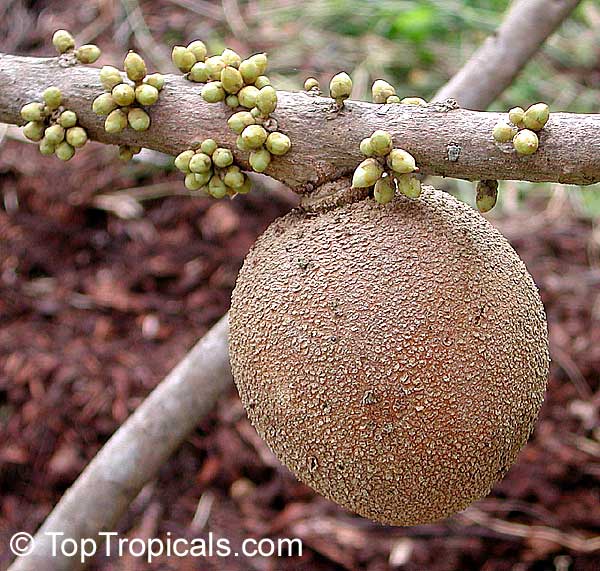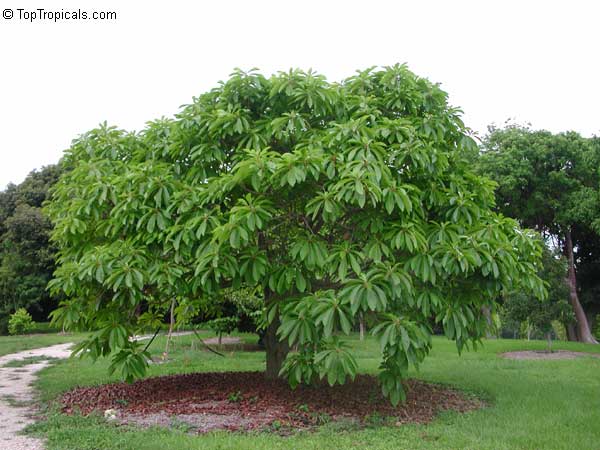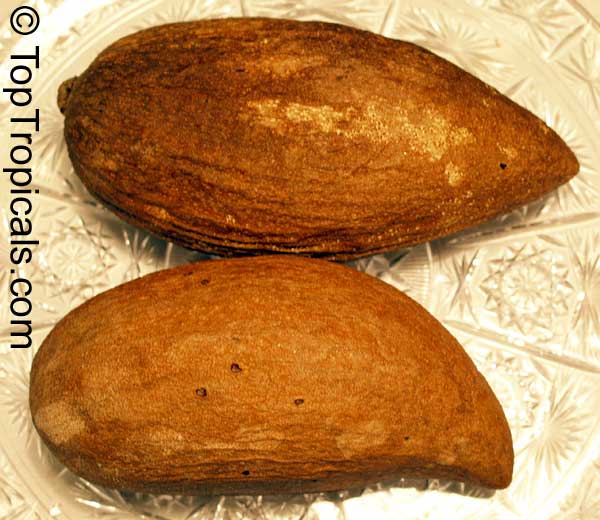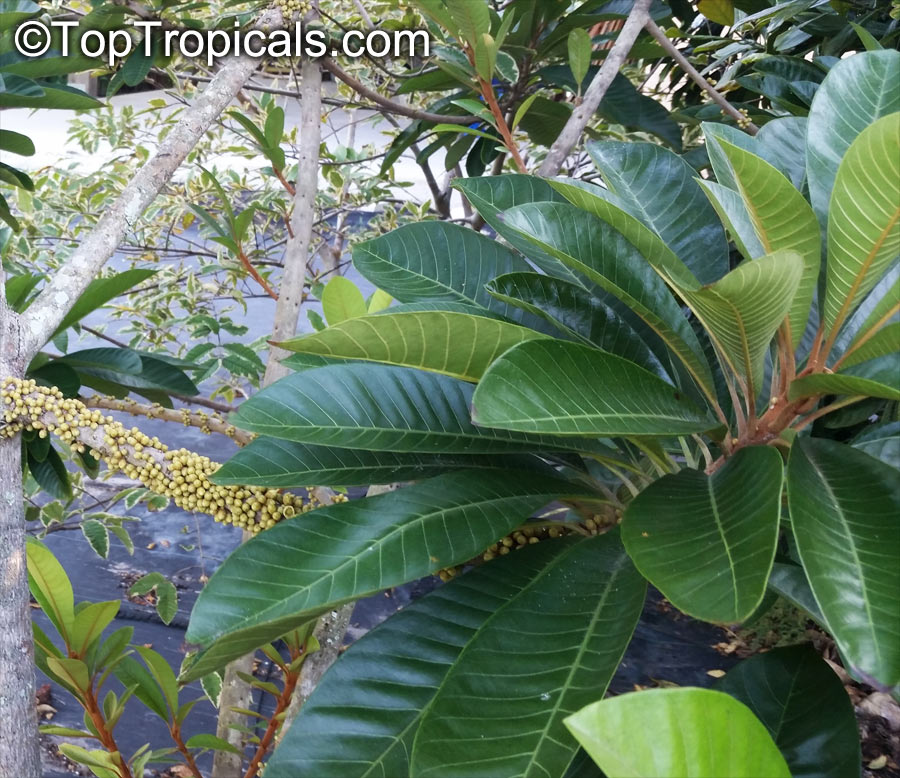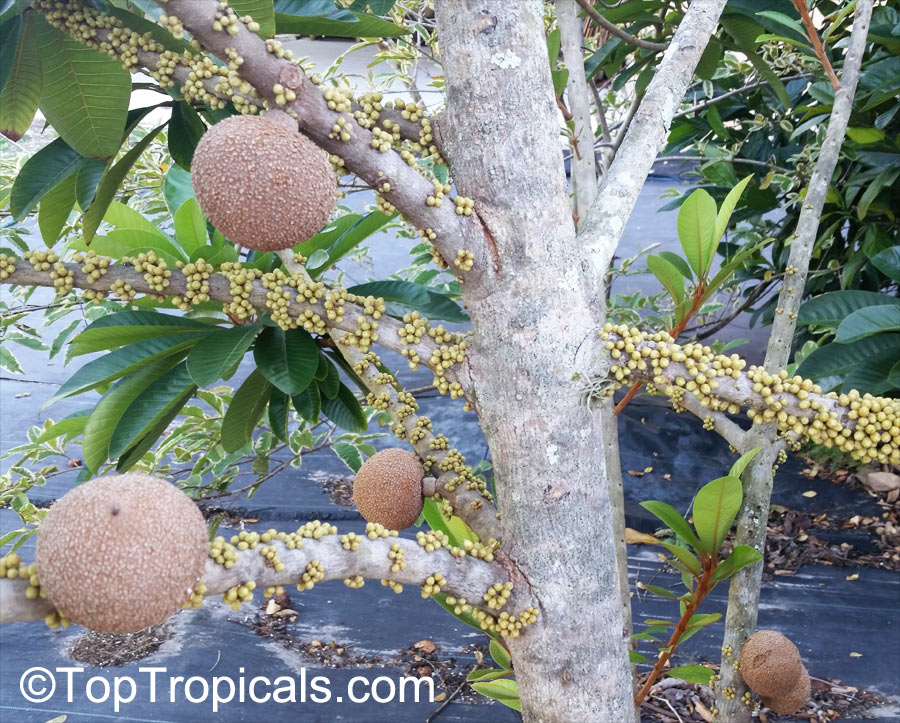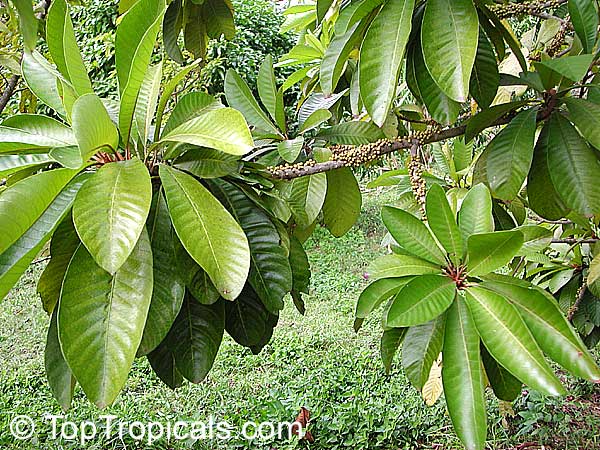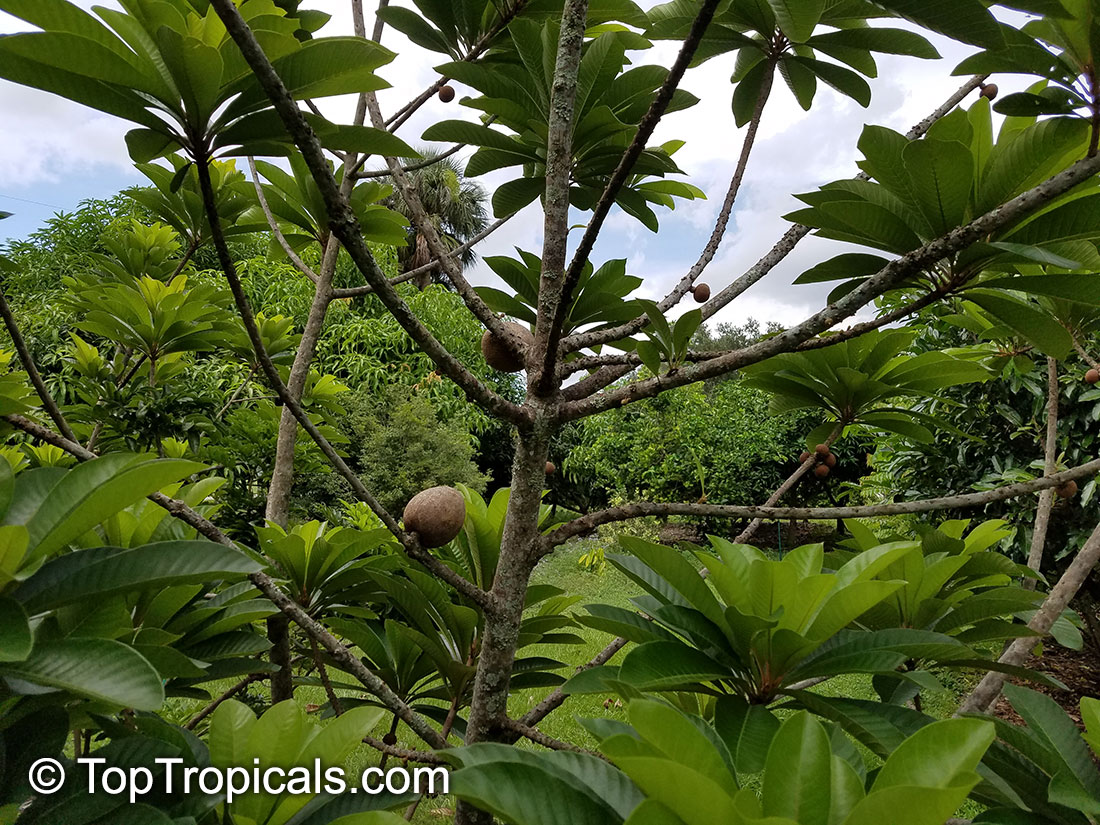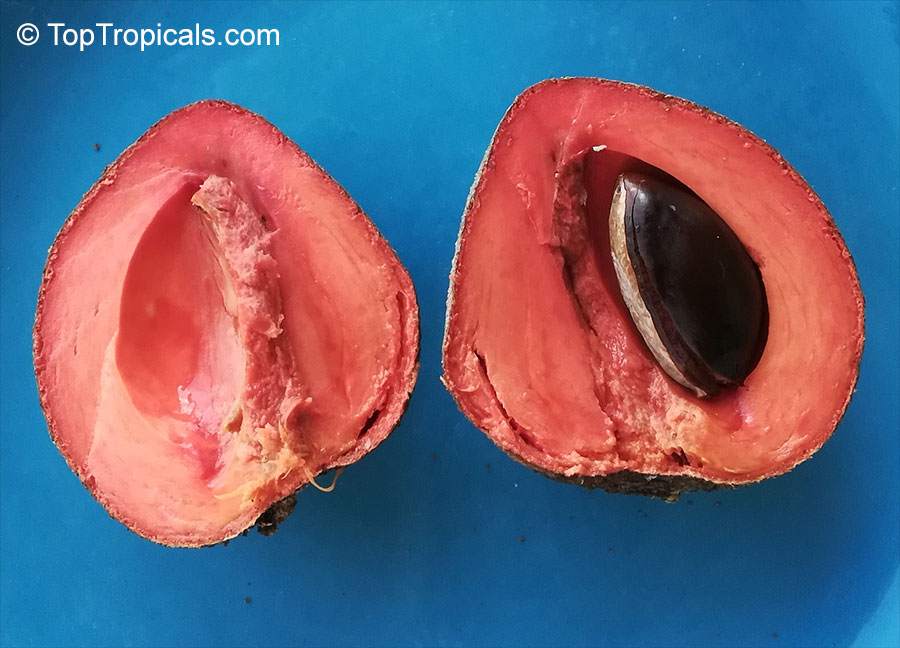Pouteria sapota (Mamey)
Top Tropicals Plant Encyclopedia
Botanical name: Pouteria sapota
Common names: Mamey, Mamey Sapote
Family: Sapotaceae
Origin: Central America






The Mamey Sapote occurs naturally in Southern Mexico to Northern Nicaragua, and has been introduced to many tropical countries where it became very popular cultivated fruit. It has existed in Florida for at least a century. Cuban favorite, it is considered by Cubans to produce the best fruit in the world.
Mamey Sapote is rather slow growing, medium to large size tree with a spreading crown, and white, gummy latex. The plant has wide evergreen to semi-deciduous leaves, clustered at the branch tips, pointed at both ends. The small, white, to pale-yellow flowers emerge in clusters in the axils of fallen leaves along the branches. The fruit may be round, ovoid or elliptic, varies 3-9", and ranges in weight from 1/2 to 5 lbs. It has rough, dark-brown, firm, leathery, semi-woody skin, and salmon-pink to deep-red, soft flesh, sweet and pumpkin-like in flavor. The fruit is used fresh, in milk shakes and ice cream. The large seed kernel is oily, bitter, and has a strong bitter-almond odor. Fruits can take 18 months to 2 years to ripen. Tree loses its leaves around mid April. At that time fruit can be easily counted - both that year's crop and the next as well.
The tree is limited to tropical or near-tropical climates. Cold sensitive when young, it attains more hardiness as it ages. Mamey Sapote prefers heavy soils but requires excellent drainage; it is intolerant of prolonged drought, and even a short dry spell may induce leaves shedding. Young plants are very cold sensitive, but become hardier as they mature. However Mammey Sapote comes slow into bearing especially if it suffers repeated setbacks from freeze. Tree loses its leaves around mid April. At that time fruit can be easily counted - both that year's crop and the next as well. Varieties: Pantin (Key West), Magana, Pace, Florida Handsome, open tree, 12 x 4 leaves clustered at tips. Excellent flavor, Cuban favorite. Fruit has rough, brown skin, red to orange pulp.
Similar plants: Pouteria sapota (Mamey)
Recommended Fertilizer: SUNSHINE C-Cibus - Crop Nutrition Booster
SUNSHINE-Honey - sugar booster
Recommended Fertilizer: SUNSHINE C-Cibus - Crop Nutrition Booster
SUNSHINE-Honey - sugar booster
Recommended Fertilizer: SUNSHINE C-Cibus - Crop Nutrition Booster
SUNSHINE-Honey - sugar booster
7 gal pot. More developed root system, thicker trunk and branches. Plant height depends on growing season and variety. Dwarf varieties are slow growers and may be shorter. Contact us for exact size description if size/height matters to you. 7 gal plants may be shipped separately from other items by Ground service due to large size. See here time in transit (business days, excluding Sat-Sun!)
Recommended Fertilizer: SUNSHINE C-Cibus - Crop Nutrition Booster
SUNSHINE-Honey - sugar booster
Recommended Fertilizer: SUNSHINE C-Cibus - Crop Nutrition Booster
SUNSHINE-Honey - sugar booster

